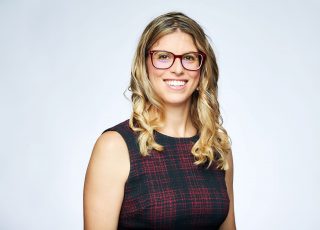
When you think about the amount of preparation needed for a cruise, the whole thing can make you exhausted. Months of planning, timelines, securing equipment and tools needed for the excursion, and science preparation, all play an important part of getting ready. .

Checking and double checking is a critical piece of this preparation, as once the ship leaves the harbor there is no turning back. That is what the last few days have been about for the Falkor crew and science team. A lot of logistics and practice have gone into this cruise to Loihi Seamount particularly because of one special member on board.

Schmidt Ocean Institute (SOI) has been fortunate enough to work with Woods Hole Oceanographic Institution (WHOI) to bring the AUV Sentry on board. This is important as it is one of the few tools that can be used to explore never-seen before parts of the undersea volcano, Loihi. Originally, the team was scheduled to use WHOI’s Nereus hybrid remotely operated vehicle (HROV), but tragically the vehicle was lost in May of this year exploring the depths of the Kermadec Trench northeast of New Zealand. With WHOI’s autonomous underwater vehicle on board, the team now can map and explore Loihi’s extraordinary mats of iron-oxidizing bacteria. Mats of iron-oxidizing bacteria are not uncommon in hydrothermal vent fields; however, the microbial mats at the base of Loihi are extensive and impressively thick – a meter or more deep at some sites. Researchers on this cruise will work to identify chemical signatures for geological features formed by microbes like those around Loihi, these signature could ultimately decipher whether similar features on other planet’s are biologically produced.

As the crew and science team busily unpack, set up their experiments in the wet lab, and make sure that all loose items are tied down, the Sentry team practices deployment and retrieval of the AUV. This is a difficult task as you do not know what kind of conditions you may experience at sea, and everyone needs to be prepared. Using Falkor’s CTD and Sentry’s high-resolution camera, sonar systems, and chemical sensors the team wants to make sure that they will be able to maximize their time with Sentry and the R/V Falkor. Not only will this cruise provide details about the ocean chemistry and bacterial communities surrounding Loihi Seamount, it will allow scientists to produce more detailed maps then the ones that are currently available.

After several days of hard work leading up to this expedition, the science crew and SOI staff were treated to a much needed welcome barbeque, an important Falkor tradition. This not only gave scientists and crew an opportunity to get to know each other prior to departure, but a chance to relax and rejuvenate prior to the exciting two weeks ahead. Who knows what kind of mysteries will unravel at Loihi Seamount, but whatever it is, this crew is up for the challenge.

